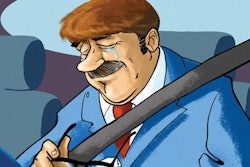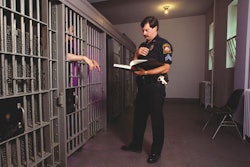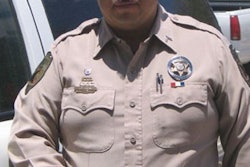Panhandling can be found in almost every community and takes on many different forms. It may be the silent person holding an empty cup to passersby. It may be someone holding a door open or carrying groceries to the car. It may be cleaning ("squeegeeing") the windshield of a car at a stop light or "guarding" a parked car. Many panhandlers feel that by providing a nominal service they are not begging. Either way, the donor usually feels compelled by some mixture of generosity, discomfort, and intimidation.
The general public has divergent views of panhandlers. The sympathetic view holds that they represent a failure on the part of society to take care of the less fortunate and panhandling is a legitimate way for destitute people to eke out a means for survival. Proponents of this view feel that panhandling provides an opportunity to help the needy and it should not be regulated by the police.
The unsympathetic view holds that panhandlers are a blight to an otherwise hardworking community. The panhandlers and their usual associated problems such as poor personal hygiene and substance abuse are the beginnings of decay within a community and the foothold for disorder and crime.
Passive Vs. Aggressive
There are two types of panhandling: passive and aggressive. Passive panhandling is a silent solicitation; the panhandler generally lets his appearance speak for itself. Aggressive panhandling involves some type of verbal interaction usually accompanied by a physical action. The physical action can be approaching a pedestrian or knocking on a car window. Aggressive panhandling may include some type of menacing action with a direct or implied threat. Passive panhandling plays on a citizen's sense of generosity, whereas aggressive panhandling plays more on a citizen's sense of fear.
Passive panhandling is a very low police priority. It is generally tolerated for practical reasons; there are usually more pressing issues in a community than a silent solicitor. The problems start when an emboldened panhandler begins to actively pursue donations. Intimidated pedestrians may begin to avoid an area plagued by aggressive panhandlers. Merchants who rely on foot traffic will often call police for assistance. When the call comes in, the usual police response is to "shoo" the panhandler from the area.
One study estimated that police made arrests for panhandling in about one percent of all encounters. This is efficient in terms of time, but does nothing to address the underlying problem and does little to deter the aggressive panhandler. When "shooing" does not work, your police department needs a stronger response plan.
Do Some Research
To develop such a plan, first determine where the panhandling is taking place. Once a panhandler finds a profitable spot, he is likely to stick with it. There have even been turf wars between panhandlers for lucrative locations, such as a store where wealthier citizens make small purchases that result in change.
An upscale coffee shop is a prime location. Anyone who can spend $4 on a cup of coffee can surely afford $1 for someone who held the door open. College sandwich shops are popular because idealistic college students have a sympathetic view of panhandlers. Some panhandlers favor buses or trains because they provide protection from the elements and a "captive" audience. Panhandlers also favor freeway exits and areas around bars.
Once you've located the offenders, develop detailed profiles. Research provides some surprising information. First, very few homeless people panhandle. Surprisingly, most panhandlers are not homeless and do not suffer from any mental illness. Many have a criminal record, but they are as likely to be a victim of a crime as they are to commit a crime. Research has shown that a very small number of chronic panhandlers account for most of the complaints. Most panhandlers have made a conscious choice that panhandling is the most efficient way for them to make money. Like any good salesman, they stake out a lucrative area, develop a good sales pitch, and go to work during the most productive times.
Before taking action, assess your community's support for any response to panhandlers. Some communities are so sympathetic that they have legalized panhandling. Obviously if you live in such a community you're very constrained. Study not only how many complaints are received, but also the number of different complainants. As an agency, you must realize that laws will play only a small part in eradicating problematic panhandlers. Real success is found in educating the community.
Effecting Change
Panhandlers who are arrested usually receive very light sentences because judges do not view one incident of panhandling as a very serious offense. To make the most of department time, build a strong file on an offender before making an arrest. Have a liaison ask the judge what would be considered a high number of panhandling incidents. Make sure responding officers write an incident report every time an offender is "shooed away" from a scene. Also keep a separate file on each chronic panhandler; this way when an arrest is made it can be shown that the offender has a pattern of repeated offenses instead of one, lone offense. Your agency might even want to utilize civilian police employees or special officers to conduct surveillance on chronic panhandlers.
Consult others in your agency about lobbying for laws that outlaw aggressive panhandling. And to establish a strong case, use surveillance video, as well as citizen complaints. Your agency can gather evidence by using plainclothes officers acting as decoys. When taking complaints, be sure to ask about evidence of aggressive panhandling such as "confronting the pedestrian," any "touching," repeated requests after a refusal, obscene language, or other acts that have intimidated the victim.
You can also arrest panhandlers on other charges such as public drinking, public urination, trespassing, and obstructing public passage. To effect lasting change, urge judges to include community service in sentencing and to issue restraining orders forbidding a panhandler to frequent certain areas.
To gain community support, include the public in any effort to reduce panhandling. An excellent way to accomplish this is by developing a voucher program through which concerned citizens can buy vouchers from area merchants. These vouchers are good only for basic necessities; they are not valid for the purchase of liquor or cigarettes. (Also, it is highly unlikely that the neighborhood drug dealer would accept the vouchers.) A voucher system allows generous citizens to continue to donate, confident that their donations will be used for their intended purpose.
Chronic panhandlers are a thorn in the side of police because they commit a very obvious crime but are rarely arrested. To properly handle the problem, clearly define who you are dealing with, gather public support, and develop a response that will eliminate the problem.












